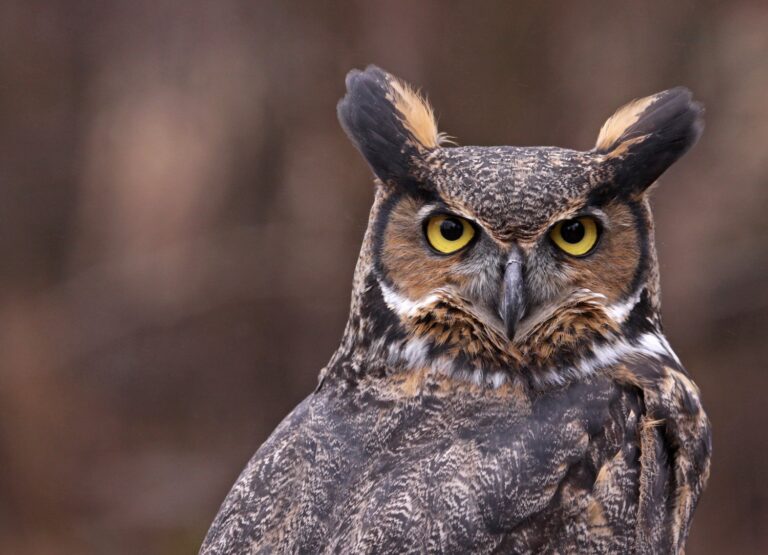Great Horned Owl Bubo virginianus
Taxonomy
Scientific name:
Bubo virginianus
Family:
Strigidae
Genus:
Bubo
Species:
Virginianus
Common names:
Great horned owl
Biology
Morphology:
Great horned owls have a rounded facial structure and forward-facing eyes which allow for binocular vision. They have distinctive horn-like feather tufts on the tops of their heads. They have a distinctive white spot on their throat. Their underbellies are white with brown and black ‘bars’. Their back is darker in color, featuring a mottled blacks and browns. Their eyes are different shades of yellow.
Reproduction:
Great horned owls are monogamous, forming a mating pair that raise the young. They have 1 to 6 eggs per season.
Diet:
Diet includes small and medium sized vertebrates like rodents, small birds, reptiles like snakes, lizards and amphibians, fish and insects and other invertebrates. They may eat carrion if the environmental conditions are severe.
Ecology
Range:
Great horned owls are native to a large geographic range that covers most of North America and extends south into Central and South America.
Habitat:
Great horned owls are well suited for many habitats and environments. Their habitats include grasslands, deserts, swamps, marshes, mangroves, and both rural and urban human settlements.
Threats
Forest areas which it inhabits have been destroyed. IUCN Red List: Least concern.

